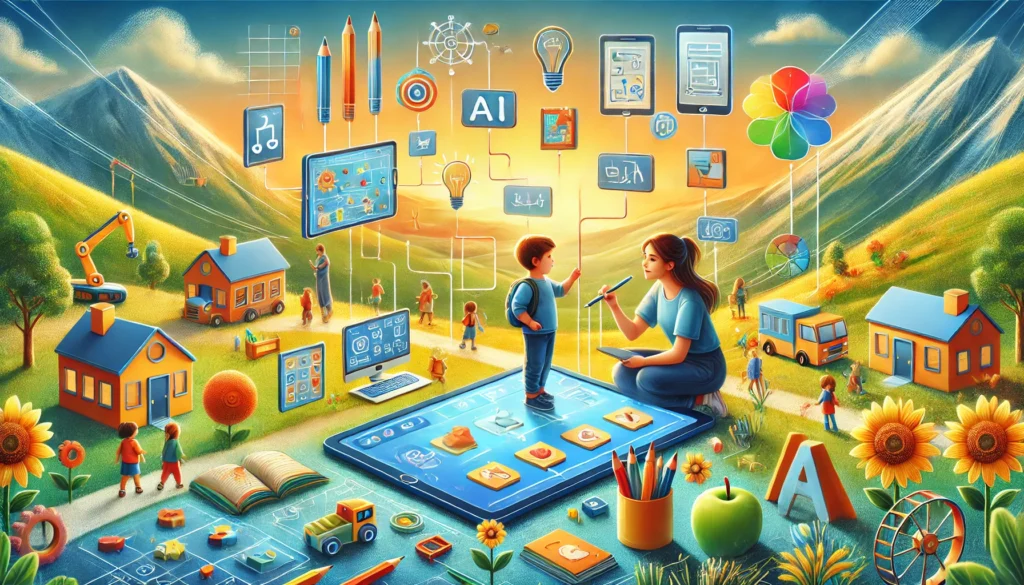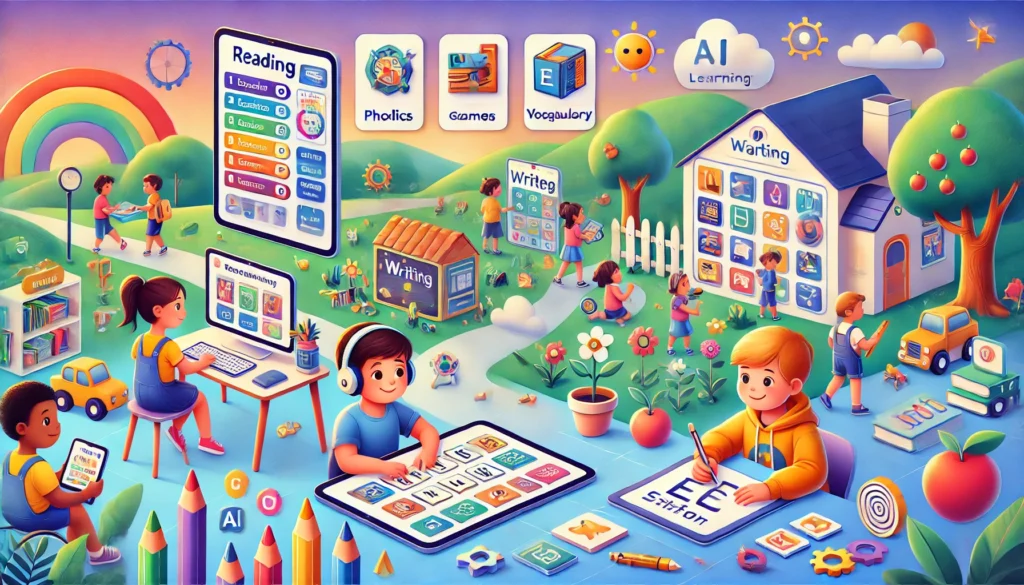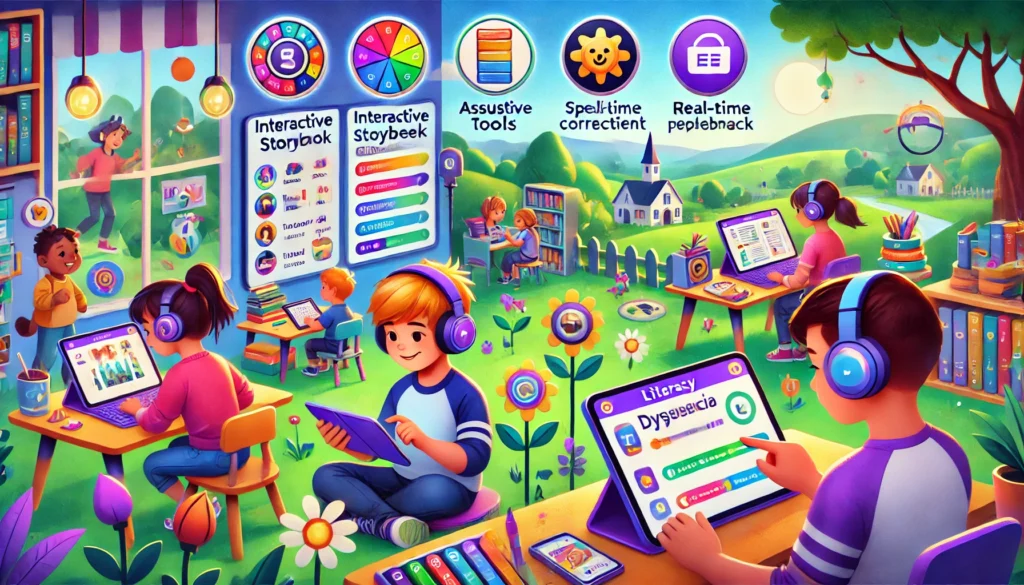Technology has become a game-changer for early reading and writing support. It plays a important role in enhancing literacy skills among young learners. Educational tools are increasingly used to close learning gaps and create effective teaching methods. In today’s digital age, integrating technology into education has proven to be an effective strategy for equipping children with foundational literacy skills. By offering personalized and engaging learning experiences, technology bridges traditional teaching methods with modern innovation.
As literacy is the cornerstone of education, leveraging technology ensures no child is left behind. Tools like apps, AI-driven platforms, and digital writing tools empower young learners and help educators address diverse learning needs. This article delves into how technology supports early literacy development, its benefits, and the challenges involved, along with a glimpse into future trends.

What Is the Role of Technology in Early Literacy Development?
Technology is a powerful tool for developing reading and writing skills in young learners. Interactive platforms offer engaging content that simplifies complex concepts. For instance, reading apps provide activities tailored to individual skill levels, ensuring gradual progress. Adaptive tools adjust to each child’s pace, helping them grasp phonics, vocabulary, and sentence structures effectively.
The personalized nature of these tools allows children to learn at their own pace, fostering confidence and reducing the pressure of traditional learning settings. Engaging content, such as animations and games, makes literacy education enjoyable, holding children’s attention and enhancing retention. Additionally, technology’s interactive elements encourage active participation, a critical aspect of early learning.
Key Technologies Supporting Early Reading and Writing
Interactive Reading Apps
Interactive reading apps are designed to make learning engaging and fun for young readers. These apps often include storytelling, phonics exercises, and vocabulary-building activities. For example, apps like ABCmouse and Epic! incorporate visually appealing graphics and interactive features to captivate young minds. Storytelling sections in these apps immerse children in narratives, enhancing their comprehension skills while fostering a love for reading.
Phonics-focused games help children recognize sounds and letters, forming a strong foundation for reading. Vocabulary-building exercises, such as matching games and quizzes, reinforce language skills. The customization options in these apps ensure that content aligns with a child’s developmental stage, offering a tailored learning experience.
Digital Writing Tools
Digital writing tools are invaluable for teaching handwriting, sentence formation, and composition. Tools like tracing apps guide children through the process of writing letters and words, improving their motor skills and letter recognition. Programs such as WriteReader and Penultimate focus on sentence-building and composition, allowing children to express themselves creatively.
Gamified exercises add an element of fun to writing practice, encouraging children to participate actively. For instance, completing tasks to earn rewards motivates children to refine their skills. These tools also provide instant feedback, helping learners correct errors and improve progressively. Over time, consistent use of digital writing tools enhances overall writing proficiency.
AI-Based Learning Platforms
AI-based platforms revolutionize early literacy education by offering highly personalized learning experiences. These platforms use algorithms to track a child’s progress, identifying strengths and areas for improvement. Based on this analysis, the platforms generate custom learning paths that adapt to the child’s needs.
Speech recognition technology is a key feature in many AI-based tools. It helps children refine their pronunciation by providing real-time corrections. For example, platforms like Reading Assistant listen to children read aloud and highlight mispronounced words, encouraging self-correction. AI tools also ensure inclusivity by supporting multilingual learning environments, making literacy education accessible to children from diverse linguistic backgrounds.

Benefits of Using Technology for Literacy Support
Engaging Learning Environment
Technology creates an interactive and engaging learning environment, transforming how children perceive education. Multimedia elements like animations, videos, and sound effects make learning dynamic and exciting. For instance, interactive storybooks come alive with character voices and animations, sparking children’s curiosity and imagination.
Moreover, gamified elements in educational tools keep young learners motivated. Achieving milestones, earning badges, or completing challenges fosters a sense of accomplishment. This approach not only enhances learning outcomes but also instills a lifelong love for reading and writing.
Accessibility for Diverse Learners
One of the most significant advantages of technology is its ability to cater to diverse learning needs. Specialized tools are available for children with disabilities, ensuring inclusivity in literacy education. For example, text-to-speech and speech-to-text functionalities help children with visual or speech impairments engage with learning materials effectively.
For children with learning disabilities like dyslexia, tools such as Read&Write provide support through features like text highlighting and audio playback. These technologies break down barriers to education, enabling every child to access quality learning resources tailored to their unique needs.
Real-Time Feedback for Improvement
Real-time feedback is a critical feature of technology-driven learning tools. Instant corrections and suggestions during reading or writing tasks help children learn from their mistakes. For instance, spelling correction tools highlight errors as children type, encouraging them to identify and rectify mistakes independently.
Immediate feedback not only accelerates learning but also boosts confidence. When children see their progress through measurable outcomes, such as improved scores or completed levels, they become more motivated to continue learning.

Challenges in Integrating Technology for Early Literacy
Despite its numerous benefits, integrating technology into early literacy education comes with challenges. High-quality educational tools and software can be expensive, making them inaccessible for underfunded schools or low-income families. Bridging this gap requires collaborative efforts from governments, educational organizations, and technology providers.
Another concern is the impact of excessive screen time on children’s health and development. Prolonged use of digital devices can lead to issues such as eye strain and reduced physical activity. Striking a balance between digital and traditional learning methods is essential to mitigate these risks.
Lastly, effective use of technology requires teacher training. Educators must be equipped with the skills to integrate digital tools into their teaching strategies. This involves understanding how to use the tools and adapting them to meet curriculum goals.
The Future of Technology in Early Literacy Education
Emerging Trends
Emerging technologies promise to transform early literacy education further. Virtual reality (VR) is being explored as a tool for immersive storytelling, allowing children to step into the worlds of their favorite stories. This hands-on experience enhances comprehension and makes reading exciting.
Augmented reality (AR) is another trend gaining traction. AR apps overlay interactive elements on physical books, making reading a multisensory experience. For instance, scanning a page with an AR-enabled device might reveal animations or additional content that deepens understanding.
Global Impact
Globally, technology is helping bridge literacy gaps in underserved regions. Mobile apps provide access to educational content in areas with limited resources, ensuring that children in remote or impoverished communities can develop literacy skills. Programs like Worldreader distribute e-books to children in developing countries, fostering a culture of reading.
Scaling access to high-quality educational resources through technology has the potential to level the playing field, ensuring that every child, regardless of their background, has an opportunity to learn and thrive.
Conclusion
Technology is transforming early literacy education by making learning interactive, accessible, and personalized. Tools like apps, AI platforms, and digital writing programs equip children with the skills they need to succeed. While challenges such as cost and screen time persist, the benefits for young learners and educators far outweigh the drawbacks.
By embracing innovative tools, parents and teachers can create a supportive environment that nurtures literacy development. As technology continues to evolve, it holds immense potential to shape the future of education, ensuring that every child has the chance to become a confident reader and writer.
FAQs
Q: How does technology support early reading and writing skills?
Technology provides interactive tools like apps, games, and AI platforms to make learning engaging and effective.
Q: Are there specific tools for children with special needs?
Yes, technologies like text-to-speech and speech-to-text help children with diverse learning abilities.
Q: What are the challenges of using technology for literacy?
Key challenges include high costs, screen time concerns, and the need for teacher training.
Q: Can technology replace traditional teaching methods?
No, it complements traditional teaching by providing additional resources and personalized support.
Q: What does the future hold for technology in early literacy?
Trends like VR and AR promise more immersive and engaging learning experiences for children.


